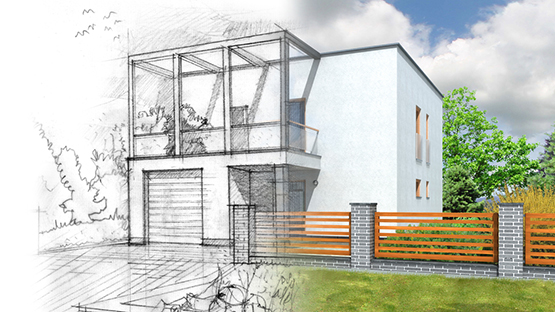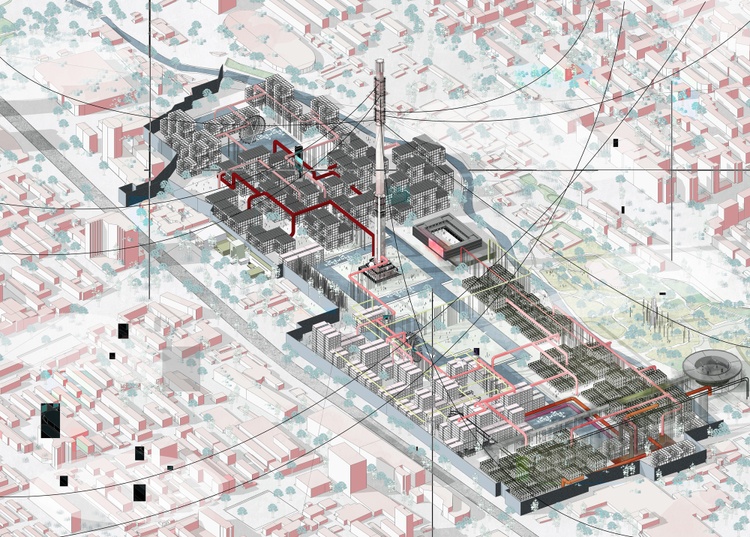The Creative Process Behind Effective Projects from CDA Architects
The Creative Process Behind Effective Projects from CDA Architects
Blog Article
Comprehending the Collaborative Refine In Between Designers and Designers in Modern Building And Construction Projects
The collective procedure between designers and designers is vital in modern-day construction projects, as it balances layout intent with design feasibility. This partnership not just affects the aesthetic and functional facets of a project however likewise plays a critical role in attending to sustainability challenges. By employing efficient interaction approaches and leveraging advanced technologies, such as Building Info Modeling (BIM), groups can work extra cohesively. The complexities of this partnership usually existing distinct challenges that can hinder progress. Checking out these dynamics reveals insights that could substantially affect job end results and total industry requirements. cda architects.
The Significance of Collaboration
The joint synergy between engineers and designers is important for the successful understanding of any type of construction project. This collaboration brings with each other unique experience and point of views, enabling the integration of ingenious design with sensible design solutions. By collaborating, engineers and engineers can ensure that a task not only fulfills aesthetic and useful demands but likewise sticks to security, sustainability, and budgetary restrictions.
Collaboration promotes a shared vision, promoting the positioning of objectives and expectations from the beginning. This placement is important in attending to potential difficulties and mitigating risks that might emerge during the job lifecycle. A joint method enables for the reliable allotment of resources, maximizing both time and cost.
The relevance of collaboration prolongs to the repetitive procedure of design and building, where responses from designers can inform architectural choices, bring about more possible and sustainable styles. Alternatively, engineers can inspire designers to assume creatively concerning how to attain architectural stability without endangering creative intent. Inevitably, the collective connection between architects and engineers is not just helpful; it is fundamental to the creation of top quality, practical, and innovative built atmospheres that satisfy the needs of society.
Communication Techniques and Devices
Reliable interaction strategies and devices are crucial for fostering collaboration between engineers and designers throughout the job lifecycle. Developing clear channels of communication is necessary to make sure that all staff member are aligned with project purposes, timelines, and duties. Normal conferences, both in-person and online, offer opportunities for stakeholders to discuss progression, address worries, and make notified decisions.

Additionally, adopting collaborative interaction tools, such as Slack or Microsoft Teams, allows for immediate messaging, file sharing, and ongoing discussions, advertising a more dexterous action to emerging concerns. Document monitoring systems also play a vital role in arranging project documentation, making sure that all team members have access to the most recent details.
Shared Objectives and Project Vision
A linked project vision functions as the structure for successful collaboration between engineers and engineers (cda architects). This shared vision not just straightens the initiatives of both events however likewise develops an usual framework for decision-making throughout the project's lifecycle. By articulating clear objectives, stakeholders can successfully browse the intricacies of contemporary building projects, guaranteeing that both aesthetic and useful needs are fulfilled
Establishing common objectives involves open discussion and a comprehensive understanding of each technique's contributions. Engineers commonly concentrate on style intent, spatial relationships, and individual experience, while designers stress architectural honesty, systems performance, and compliance with policies. When these point of views are straightened, the outcome is a natural job that sticks to both imaginative ambitions and technical feasibility.
Moreover, a distinct task vision fosters liability amongst employee, motivating each individual to take possession of their role in achieving the preferred outcome. Normal check-ins and joint workshops can even more reinforce this commitment, permitting changes to be made as the job develops. Ultimately, a common vision not only boosts teamwork however additionally boosts the high quality of the last deliverable, bring about successful project conclusion.
The Duty of Innovation
Leveraging innovation has become essential in boosting collaboration in between engineers and designers. Building Information Modeling (BIM) stands out as a crucial modern technology, permitting both designers and engineers to develop in-depth 3D models that envelop layout intent and structural integrity.
In addition, cloud-based systems enable seamless partnership, allowing webpage job stakeholders to accessibility and upgrade task information from anywhere. This cultivates a culture of transparency and liability, as adjustments can be tracked and reviewed in real-time. Additionally, mobile applications more boost communication, supplying on-site groups with immediate access to project specifications and updates.
Arising technologies such as expert system and artificial intelligence are likewise beginning to contribute in anticipating analysis, aiding groups recognize prospective issues prior to they occur. Ultimately, the duty of innovation in architecture-engineering collaboration not just boosts process efficiencies yet likewise enhances technology, causing more effective job outcomes. By welcoming these technological advancements, engineers and engineers can make certain a much more natural and efficient collective procedure throughout the building and construction lifecycle.
Instance Studies in Effective Partnerships
Numerous instance research studies illustrate the extensive impact of reliable partnerships in between designers and engineers on task results. One noteworthy instance is the partnership on the High Line in New York City City, where landscape designers, designers, and urban organizers worked with each other to change an abandoned rail line right into a vibrant public park. This multidisciplinary method not just enhanced the visual quality however additionally ensured structural safety and security and environmental sustainability.

The Burj Khalifa in Dubai additionally demonstrates the importance of joint efforts - cda architects. The integration of architecture and engineering knowledge allowed the job team to attain extraordinary heights while adhering to safety policies and visual vision
These examples emphasize the importance of interaction, trust fund, and shared goals. In today's complex building environment, such partnerships are necessary to browsing obstacles and delivering jobs that satisfy both useful and visionary goals.
Final Thought
Finally, the cooperation between designers and engineers is vital for the success of modern-day construction tasks. Effective communication strategies, a common project vision, company website and the assimilation of innovative modern technologies are important elements that promote this partnership. By cultivating a society of liability and leveraging Learn More devices such as Structure Information Modeling (BIM), groups can navigate job complexities, making certain that visual, practical, and sustainability purposes are accomplished. Inevitably, this synergy causes innovative and successful task outcomes.
Report this page